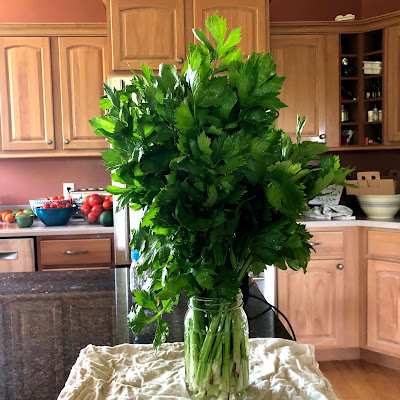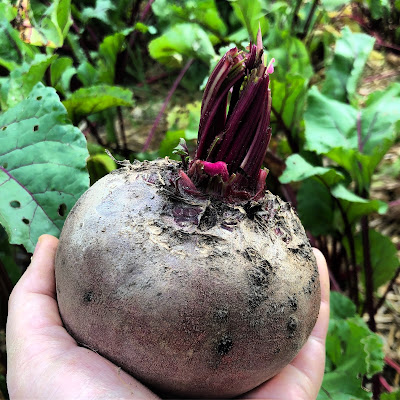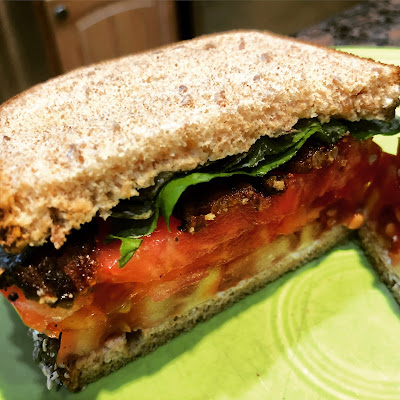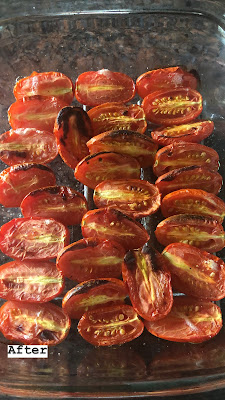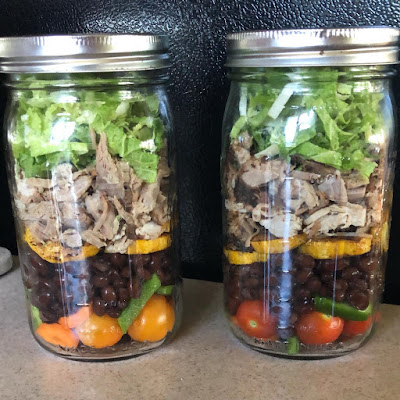We've been buying bulk pork since 2014, when we started with half a hog from a local farmer we knew personally. Today we took delivery of our third whole hog, and I thought it might be nice to write up some details for folks considering making their first purchase. If you decide to opt out of the factory-farmed meat economy, you may be intimidated by the process of purchasing your meat directly from a farmer. This post will help you understand the ordering process from start to finish. Later this year I'll add a post for beef.
Why We Buy Whole Hogs
- We want to support local farmers who raise their animals humanely, and as naturally as possible. We want to know that our pig had a good life. We have, on occasion, visited our pig to "meet our meat" while it's still on pasture.
- The meat tastes better. At least to us, pasture-raised pork chops, bacon, and roasts have a much richer flavor than anything you'll buy in a grocery store. If you're able to find a heritage breed, like Red Wattle, you're in for an extra treat.
- We control the cuts of meat. We like our pork chops thicker than most, and sometimes we want the pork belly whole so we can make our own bacon. We want the butts whole for the smoker. Yes, you can always order these from the butcher, but we enjoy the control we have over the finished product.
- I like the challenge of cooking all parts of the pig. As you'll see later in this post, there's hardly any part of the pig I don't take. While some people may think of pork as just chops or bacon, I like to have the bones for stock, hocks for soup, and even fat for rendering lard.
- We like having a stocked freezer. Between my gardening, canning, bulk purchases, an occasional trip to Costco for dried goods, I can make many meals without going to the grocery store. I love a Sunday night of meal planning that doesn't require a grocery list.
One reason I didn't list was saving money. Although we do save money on a per-pound basis compared to the retail price of pasture-raised pork, "going whole hog" isn't a net money-saver for us. If we didn't have all this meat in the freezer, we would eat less of it overall, reducing the meat bill. There's a full breakdown of our savings compared to the retail price at the end of this post.
I should note, we have more than sufficient freezer space for bulk meat. In addition to the standard size refrigerator/freezer in our kitchen, we have a chest freezer in the basement and an upright freezer (about the size of a standard refrigerator) in our garage. The chest freezer was purchased used on Craigslist, and the upright freezer came from a scratch and dent sale at the appliance store. So yes, we have more freezers than people in our house. Don't judge. A whole hog will probably fill half to 3/4 of a chest freezer.
Ordering A Whole Hog
Ordering bulk pork generally requires planning. We've usually ordered our hogs anywhere from 3-8 months in advance. Prior to this year, our last bulk pork purchase was in 2017. The young farmers we purchased from in 2016 and 2017 decided not to continue producing pork, so we needed to find a new farm. I used the
Wisconsin Farm Fresh Atlas to find farms in my area producing pork, and was pleased to find a farm less than 15 miles from our house. I contacted them in early May and was able to reserve a whole hog scheduled for butchering in August. I was required to put down a $200 deposit, and was then instructed to just wait for a phone call in August to provide cutting instructions.
To find a provider near you, either use a similar farm guide, google (although many farms have very basic websites, if they have a website at all), or contact a local butcher. They can either sell you a whole or half hog directly, or connect you with a farmer who uses them as a processor.
Cost of a Whole Hog
All you'll know when you order is what the price per pound will be for your hog. This year, ours was $4.05/lb. Nationally, this can range anywhere from $3.50/lb - $9.50/lb. If you only order a half hog, the price may be slightly more. To estimate the eventual cost of your purchase, you need to identify the following things.
- Price per pound
- Estimated hanging weight (this varies by breed; your farmer should be able to provide an estimate)
- Butcher and processing fees
Your total will be the price per pound multiplied by the hanging weight, plus the butchering and processing fees.
The hanging weight is how much the carcass weighs after it's been butchered and some non-edible parts (hide, feet, head, some internal organs, some bones) have been removed. The hanging weight is usually about 72 percent of the total live weight of the animal. We've had hogs hang as low as 95 pounds (a heritage breed that was either a runt or was harvested too early) and as high as 175 pounds. I've seen reports of some homestead hogs hanging over 200 pounds. The actual weight of the cuts of meat you'll get will be less than the hanging weight since it includes fat, some bones, and other parts you may not want (I take them all).
Butcher and processing fees are somewhat variable, but usually there is a kill/butchering fee, a processing fee (to cover the labor for breaking down the carcass) and specialty processing fees such as smoking/curing or sausage making. Our total butcher and processing fees are usually between $100 and $200 for a whole hog, depending on what cuts/products we order.
You won't know your final price until after the hog has been butchered and processed. The farmer will call or email you with the hanging weight and the total amount due. They may or may not have the butchering and processing fees available depending on how they're handling pickup (see below).
The hog we ordered this year is our largest (and most expensive) yet. It's also the first time we haven't ordered a Red Wattle; we decided to opt for our closest farmer who practiced natural techniques rather than seek out a Red Wattle farmer. Here's how the price of our hog was calculated.
- Price per pound: $4.05
- Hanging Weight: 174 pounds
- Butchering Fee: $50
- Processing (60 cents per pound): $104.40
- Ham Smoking (85 cents per pound): $31.37
- Bacon Smoking (95 cents per pound): $13.49
So, the cost of the meat was $704.70, and the processing was $199.26, for a grand total of $903.96. What did we get for that? I'll share after explaining what it means to submit "cutting instructions" and how to actually get your meat products.
Submitting Cutting Instructions
Cutting instructions are exactly what they sound like—instructing the butcher on how you'd like your meat cut up. There are plenty of options when butchering a whole hog, and when you choose one thing (e.g., pork tenderloin) you impact your ability to have something else (e.g., T-bone-like loin pork chops). If you've never butchered an animal before, I recommend familiarizing yourself with the different ways to break down a pig—even though you're going to have someone else do it for you.
This video from Whitefeather Meats is very instructional; I especially like how they make different choices on each of the two sides of pork to show you what is possible.
Your farmer or butcher will complete a cutting sheet to document your instructions. This is the
cutting sheet I completed (pork is just the bottom third of the sheet). When you order your hog, ask where it will be butchered and then you can research their cutting sheet in advance. Here are the cutting instructions we provided for our hog.
- 5 lb roasts (we like them large for smoking)
- Chops 1.5" thick, 2 per package (since there are two of us)
- Hams: smoked, in half portions
- Bacon: Smoked, half sliced regular, half sliced thin
- Spare Ribs: yes
- Country Ribs: yes
- Pork Butts: Roasts, keep whole
- Pork Hocks: Yes
- Pork Fat: Yes, and I requested that the leaf lard and back fat be separated.
- Neck Bones: Yes
- Pork Liver: Yes
- Trimmings as ground pork
- Special Instructions: Save the jowls and the head. I couldn't get the trotters because of the way they butchered it and the timing of my instructions. It pays to get your instructions in early!
You can change this up any way you like to get you the most of what you love. In the past I've had them cut out the tenderloin, resulting in smaller pork chops. We've also had them make bacon out of just one belly and give the other to us whole. I've forgone pork chops all together and had the butcher cut a bone-in loin roast (but they didn't remove the chine bone and carving it was difficult). I've skipped all the ribs and just added that to the ground sausage. I've ordered brats instead of ground pork. I've also historically ordered my hams "fresh" which means they're just like any other pork roast you'll receive and can be used for pulled pork-type recipes. This time I finally wanted to get some smoked hams so I have something too cook at the holidays that seems more traditional.
I use the pork fat to render lard (it could also be used in homemade sausage making), the neck bones and head for pork stock, and the liver for... I'm not sure yet. Perhaps this year I'll make a pate. In the past we had it made into liver sausage which we honestly didn't love and ended up feeding to our cats. At least it was used.
I know for some people pork is all about sausage, so you may forego some of the roasts to get more of it. I personally love plain ground pork (especially in kimchi fried rice), so I take it plain.
Picking Up Your Pork
Your farmer will explain the pickup process to you; in my experience it happens one of three ways.
- Pick up directly from the butcher, paying them the butcher fees directly and paying the farm the pork fees separately.
- Pick up at the farm, paying all fees at once (if they have lots of freezer space)
- Home delivery, paying all fees at once.
Our first three hogs were picked up at the butcher. We'd mail the farm our check for the pork, and pay the butcher the processing fees. If you have to go pick up your animal, bring containers—ideally, coolers. It may help to wear gloves, since you'll be transferring frozen packages from a butcher cart directly into the back of your car. You'll go into the shop, tell them you're picking up an order, provide your name and the farm's name, and they'll wheel the product out from the back for you. They may have a back loading entrance where you can do this without disturbing retail customers. When you finish you'll want to drive straight home and get your product into the freezer.
We lucked out, and the farm we ordered from this year prefers to do home delivery. They tell me that normally they'll even walk the product into your basement and put it directly in the freezer, but since we're in the middle of a pandemic they're doing largely contactless drop off on the porch. This morning our farmer drove up around 8:30 a.m. and dropped 3 medium-size boxes on my porch, grabbed the check I left for him, chatted briefly through the screen window and wished me a good day.
What We Got From Our Whole Hog
My husband tells me I'm a little overboard with my bulk meat record keeping, but I like to say I'm just thorough. Every time we purchase meat in bulk, I inventory, weigh, and label every package (most packages don't have the weight listed on the outside for private orders like this). This helps me keep track of what's in the freezer (since much of it is buried at the bottom of our chest freezer) and calculate our average cost per pound of package meat.
From this processor, each cut came wrapped in butcher paper and affixed with a detailed label. I've worked with other processors that just stamp the name of the cut on the butcher paper, and others who deliver everything in a double layer of clear shrink wrap.
Grocery Store Cuts
- 11 packages of bacon, 1-1.25 lbs each
- 2 pork butts, 8 lbs and 9 lbs
- 20 bone-in pork chops, about 1 lb each (yes, they're huge)
- 2 packages of country style ribs, about 2 lbs each
- 2 packages of spare ribs, 2-3 lbs each
- 13 packages of ground pork, about 1 lb each
- 4 smoked hams, 7.5-9.5 lbs each
- 2 loin roasts, 4.5 - 5 lbs each
- 2 shoulder roasts, ~5 lbs each
- 3 packages of hocks, 2-3 lbs each
- Jowls, 2 lbs
Although some of these may be considered specialty cuts (e.g., jowls, hocks), they're what I consider "grocery store" cuts. You could likely walk up to the meat counter in most grocery stores, or in any butcher shop and get any of these cuts. If you preferred your roasts smaller, you'd obviously get more roasts than we did. We got less bacon than I expected; maybe our piggy had a smaller-than-average belly.
We received 137.5 pounds of grocery store cuts.
"Extras"
I told you I like to cook with the whole hog! In addition to grocery store cuts, we also received the following items.
- Fat - 17.75 lbs
- Leaf Lard - 6.5 lbs
- Neck Bones - 3.25 lbs
- Liver - 3.75 lbs
- Head (in 2 halves) - 7 lbs
We received 36.8 pounds of "extras" from the hog, which surprisingly brought us all the way back up to our hanging weight.
Whole Hog Cost Comparison
Dividing the total cost by what we received in grocery store cuts, we paid $6.57 per pound for our pork this year. That probably seems like a lot if you're used to buying conventional pork (otherwise known as commodity pork), which retails on average around $3.75 per pound. That's what you'll see in the grocery store by default. Pastured pork, however, costs more. It's what you'll often see at specialty shops like
The Conscious Carnivore. The
August 2020 USDA Monthly Pasture Raised Pork Report provides the retail cost per pound for most of the cuts I received (or the closest equivalent). I've calculated the savings per pound on each of these items.
- Bacon: $11.12
- Butt Roast: $8.22
- Pork Chops (sirloin chops): $9.70
- Country Style Ribs (back ribs): $8.66
- Spare Ribs: $7.04
- Ground Pork: $7.59
- Ham: $7.74
- Loin Roast: $10.22
- Shoulder Roast: $8.30
- Hocks: $5.40
- Jowls: N/A (apparently these aren't as common as I thought)
Every cut retails for well above the average price per pound we paid (except the hocks, which I only have the wholesale price for). Additionally, according to the USDA the wholesale price of the lard is $8.76/lb and the liver is $5.13/lb.
The total retail price of the grocery store cuts I received is $1,149.09. We paid $903.96, for a total savings of $245.13 (21%).
I actually use the "extras," so we should also consider that the fat and liver retail at $224.61, although I wouldn't be purchasing them if I didn't already have the hog. All told, we received $1,373.70 in pork products.
Conclusion
I hope this demystifies the whole hog buying process for you. We've been very happy with our bulk meat purchases, and will continue to purchase meat this way. In fact, along with this hog the farmer also delivered us 10 whole chickens (that's 73 pounds of chicken), and we've ordered a quarter cow for delivery in October. The pork and chicken, along with a few remaining frozen bits of stock, have completely filled our chest freezer, so the beef will go in the upright freezer in the garage. I will write about our beef buying process when that meat arrives.
If you have questions about purchasing bulk meat, or if your experience was different form mine, let me know in the comments.



